In cumulonimbus clouds with heavy rain, lightning, and snow, the positive and negative charges are separated by the collision of hail※1 and hailstones※2inside the cloud. In cumulonimbus clouds with lightning (thunderclouds), the separation of charges is particularly strong, so the insulation of the atmosphere is destroyed, and an electrical discharge occurs within the cloud and between the cloud and the ground surface. This is lightning.
The charging mechanism inside a cumulonimbus cloud is still not strictly understood. The most popular theory is that the collision of hail and ice crystals※3 causes the hail and ice crystals to be charged with different polarities. Hail is negatively charged and ice crystals are positively charged at a temperature of -10℃. Lighter ice crystals are located upward due to updrafts, while heavier hail is located downward, resulting in the accumulation of both positive and negative charges in the cloud. At the earth’s surface, charges of opposite polarity corresponding to the charges at the bottom of the cloud collect by electrostatic induction, and as they accumulate, the voltage between the cloud and the earth increases. Eventually, the charges are neutralized by breaking the insulation of the atmosphere and electrically bonding, resulting in a ground discharge (lightning strike). This is the main discharge of a lightning strike.
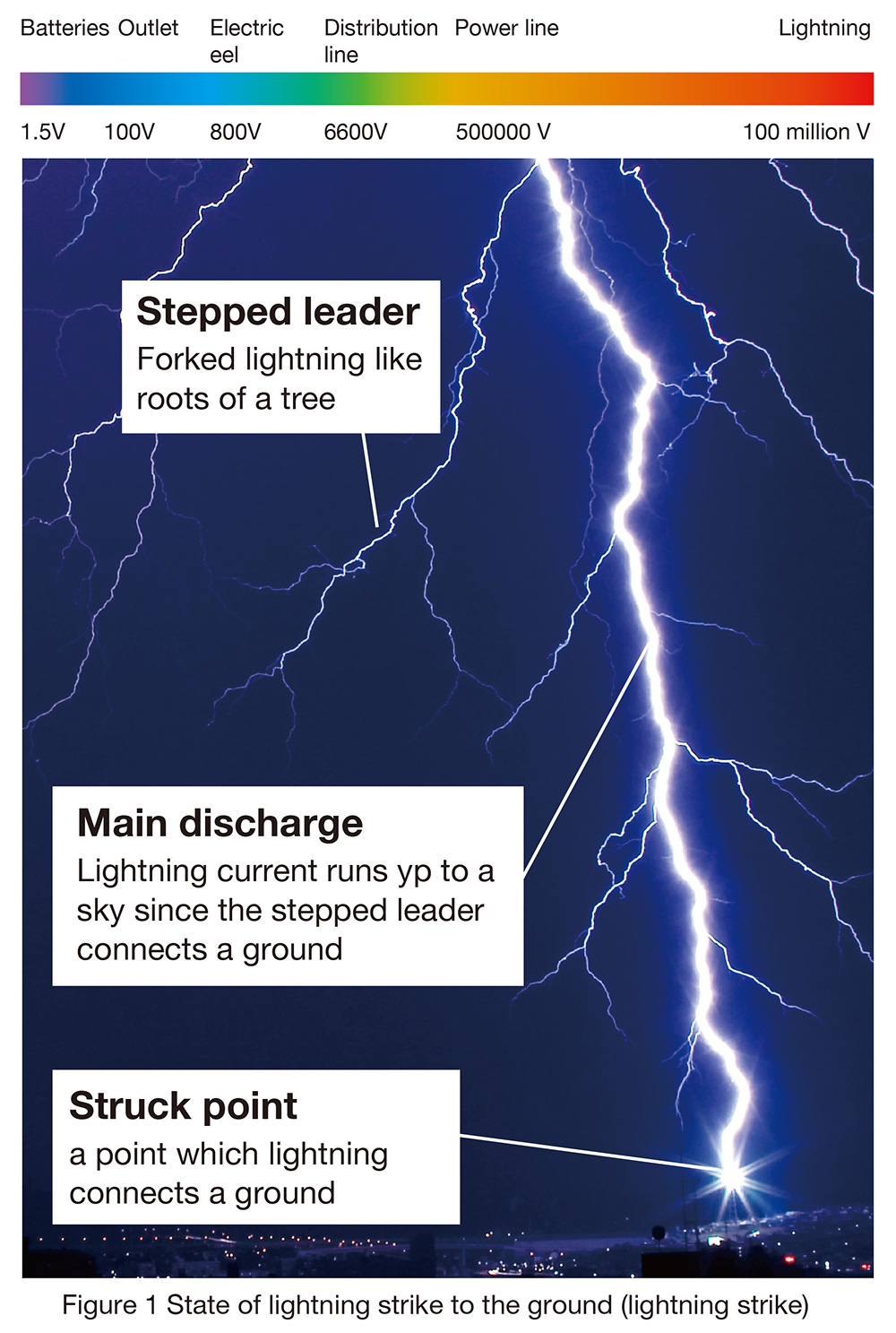
Lightning can be broadly divided into two types, summer lightning and winter lightning, due to differences in seasonality and electrical properties.
Summer thunderstorms occur when the atmosphere is unstable due to heat from solar radiation and cold air in the air masses covered by the Pacific High in summer. On the other hand, winter thunderstorms are caused by strong cold air blowing out from the Siberian air mass, and the cold air passes over the relatively warm sea of Japan, causing atmospheric instability, especially along the coast of the Sea of Japan from Tohoku to Hokuriku regions.
Figure 1 schematically shows summer and winter thunderstorms. Both summer and winter lightning basically have a structure with a positive charge distribution area at the top and a negative charge distribution area at the bottom. The negative charge in winter lightning and the positive charge in the lower part of the thundercloud disappear in a short time (from a few minutes to a few tens of minutes), so the short-lived charge distribution is shown by (+) and (-). Compared to winter thunderstorms, summer thunderstorms have a higher altitude at the cloud base and cloud top, and the charge distribution area within the cloud is distributed at an altitude of about 5 km or more above the ground surface, which is characterized by a higher number of lightning strikes. On the other hand, in winter lightning, the altitude of the cloud base and cloud top is lower than that of summer lightning, and the electric charge distribution area in the clouds is distributed at an altitude of about 2 km or more above the ground surface. Although the number of lightning strikes is small, it is characterized by the fact that the amount of neutralized charge (energy of lightning strike) of each lightning strike is often several 10 to 100 times larger than that of summer lightning.
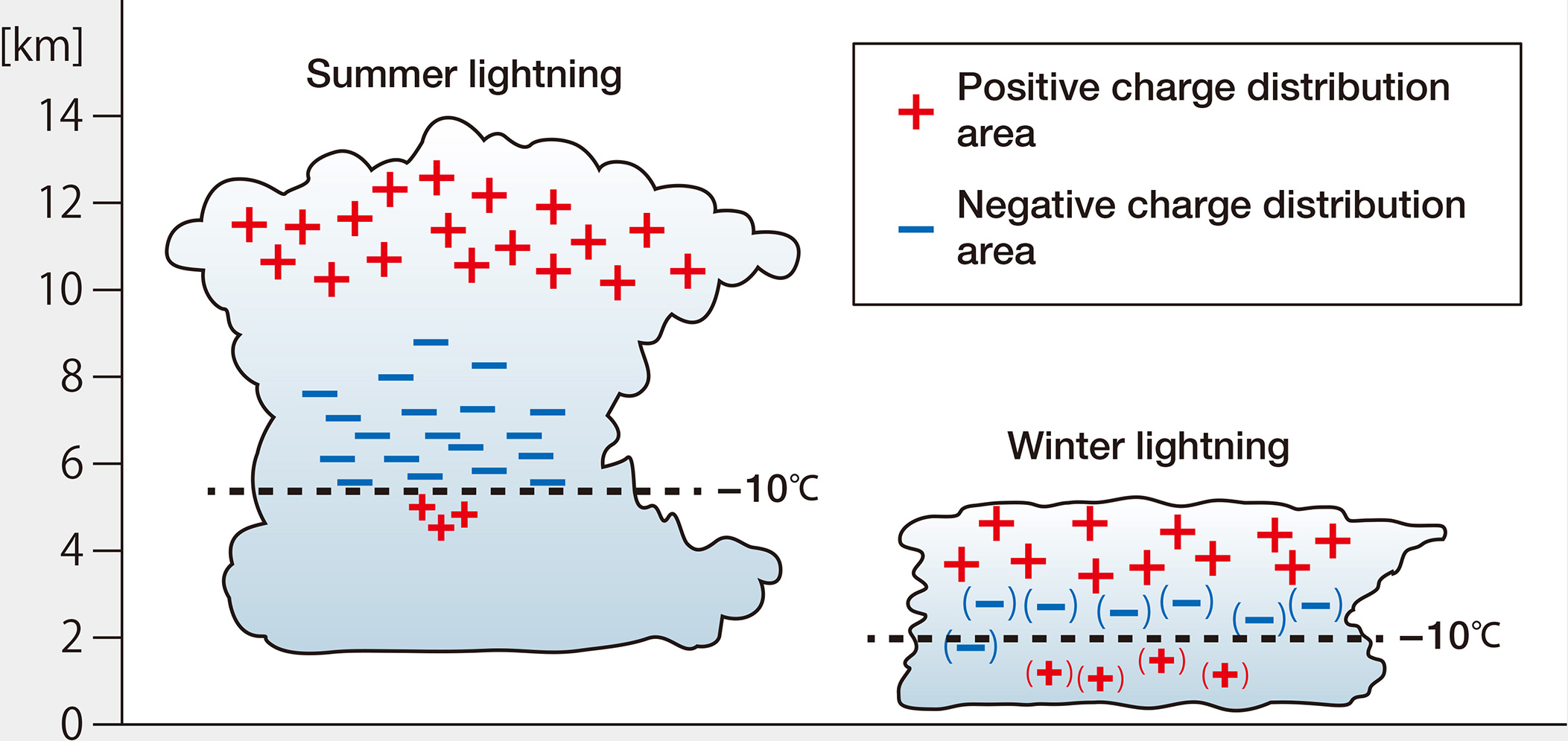
Lightning strikes are classified into four types according to the difference in polarity and the direction of the discharge, as shown in Figure 3. When the positive charge in the cloud is neutralized during a lightning strike, it is called a positive polarity lightning strike, and when the negative charge is neutralized, it is called a negative polarity lightning strike. When the direction of the leader preceding the main discharge (intense lightning) of lightning strikes is from the ground to the thundercloud, it is called upward, and when it is from the thundercloud to the ground, it is called downward. More than 90% of summer lightning strikes are downward negative polarity lightning strikes (a), in which the branching of the lightning discharge path spreads downward, and this phenomenon is often seen in summer lightning strikes. On the other hand, positive polarity lightning (b) and (d) account for about half of winter lightning. This is because the updraft in the cloud is weaker than in summer lightning, so the negative and positive charges in the lower layers of the thundercloud fall with the rain and snow, while the positive charges in the upper layers remain, which is thought to result in more positive polarity lightning strikes. In addition, because the cloud base is close to the ground surface, the frequency of upward lightning strikes (c) and (d) from high structures is high.

Here is an example of a multiple lightning mechanism for a common downward negative polarity lightning strike.
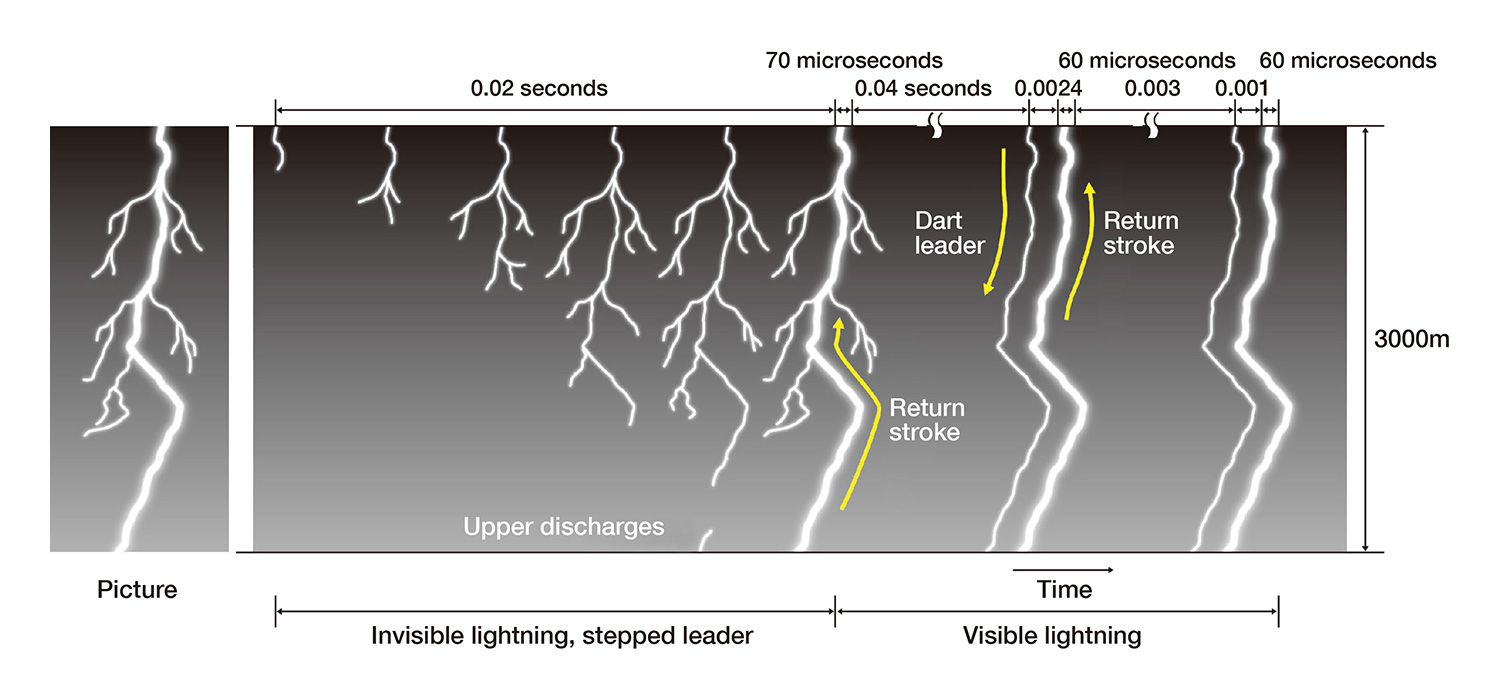
Most of the evening thunderstorms in summer are caused by “Thermal Lightning”. Strong solar radiation heats up the earth’s surface, causing updraft, which destabilize the atmosphere and generate cumulonimbus clouds (thunderhead). “Thermal Lightning” is generated by these cumulonimbus clouds.
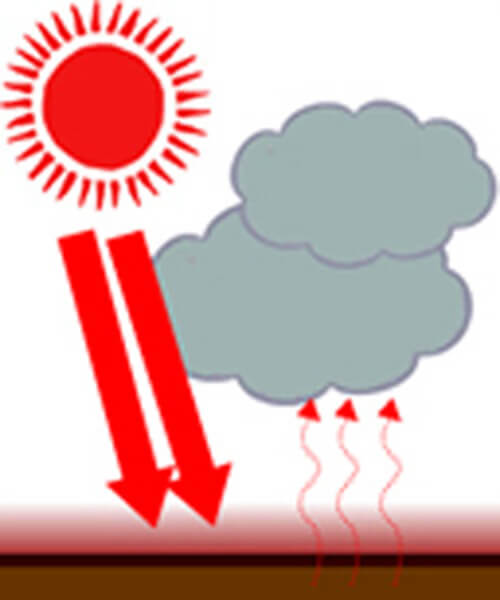
The term “Boundary Lightning” is often used to describe lightning that occurs at the turn of the seasons. When two different air masses, one warm and one cold, come into contact with each other, they do not immediately mix, but instead form a cold front and a warm front. “Boundary Lightning” is generated close to both a cold and a warm fronts.
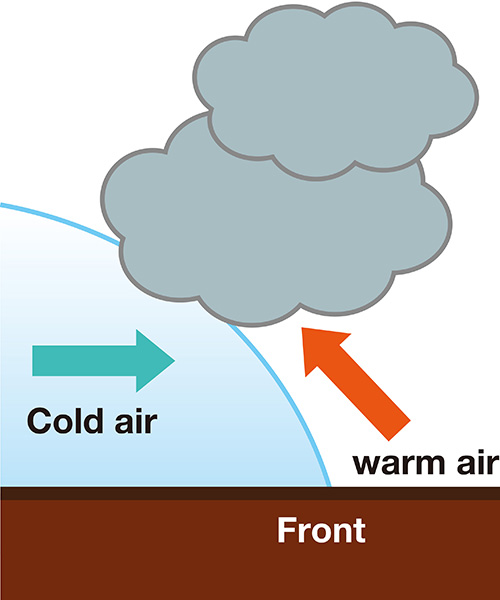
“Vortex Lightning” occurs in low pressure or near the center of typhoon when more updraft blowing by air flowing from surrounding area. When the temperature is high, “Vortex Lightning” remains strong for a long time and affects a wide area because of its fast moving speed.
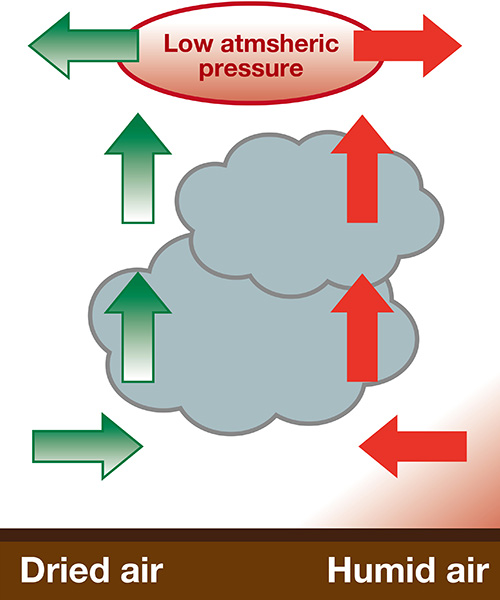
| Summer thunder | Winter lightning | Induced lightning | |
|---|---|---|---|
| Voltage of thundercloud※1 | Tens of millions to hundreds of millions of V | Tens of millions to hundreds of millions of V | – |
| Height of thundercloud(cloud base) | 1200~2000m | 300m~ | – |
| Height of thundercloud(height) | 7000~16000m | 4000~7000m | – |
| Lightning current(peak value) | Thousands of A to 300 kA | Thousands of A to 300 kA | – |
| Duration time(front wave shape) | 1 to several tens of μs | 1 to several tens of μs | 1 to several tens of μs |
| Duration time(tail wave shape) | tens to hundreds of µs | Sometimes exceeding tens of ms | Several to several tens of µs |
| Voltage induced in distribution lines(peak value) | – | – | Up to several hundreds kV※2 |
| Energy | Large | Extremely large(several hundred times larger than summer lightning) | Small |
The Institute of Electrical and Electronics Engineers : Lightning and the Advanced Information Society (1999)